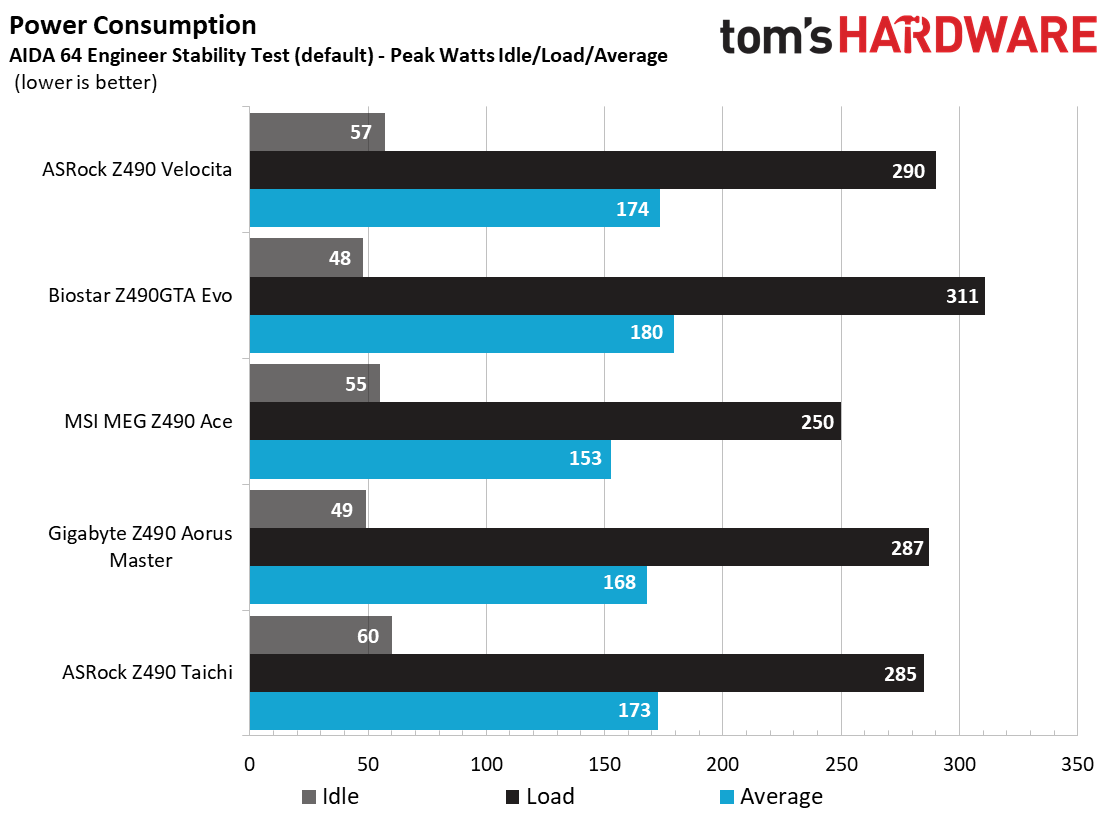Why you can trust Tom's Hardware
All standard benchmarks and power tests are performed using the CPU’s stock frequencies (including stock Thermal Velocity Boost), with all power-saving features enabled. Optimized defaults are set in the BIOS and the memory is set using the XMP profiles. For this baseline testing, Windows is set to High Performance, except for during power testing, where we switch to Balanced so the PC idles properly.
Synthetic Benchmarks
Synthetics are a great tool to figure out if a board is running out of spec, as identical settings should produce extremely similar performance results. Advanced memory timings are the one place where motherboard makers can still optimize for either stability or performance though, and those settings can impact some testing.

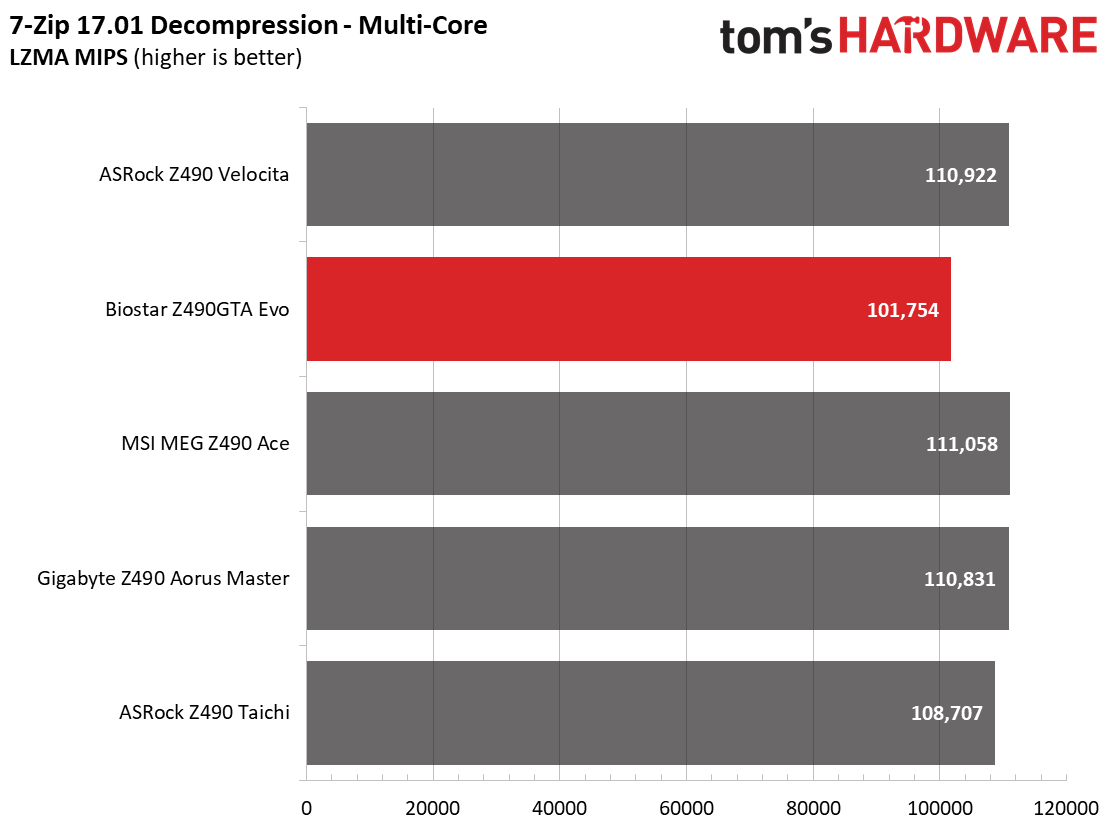
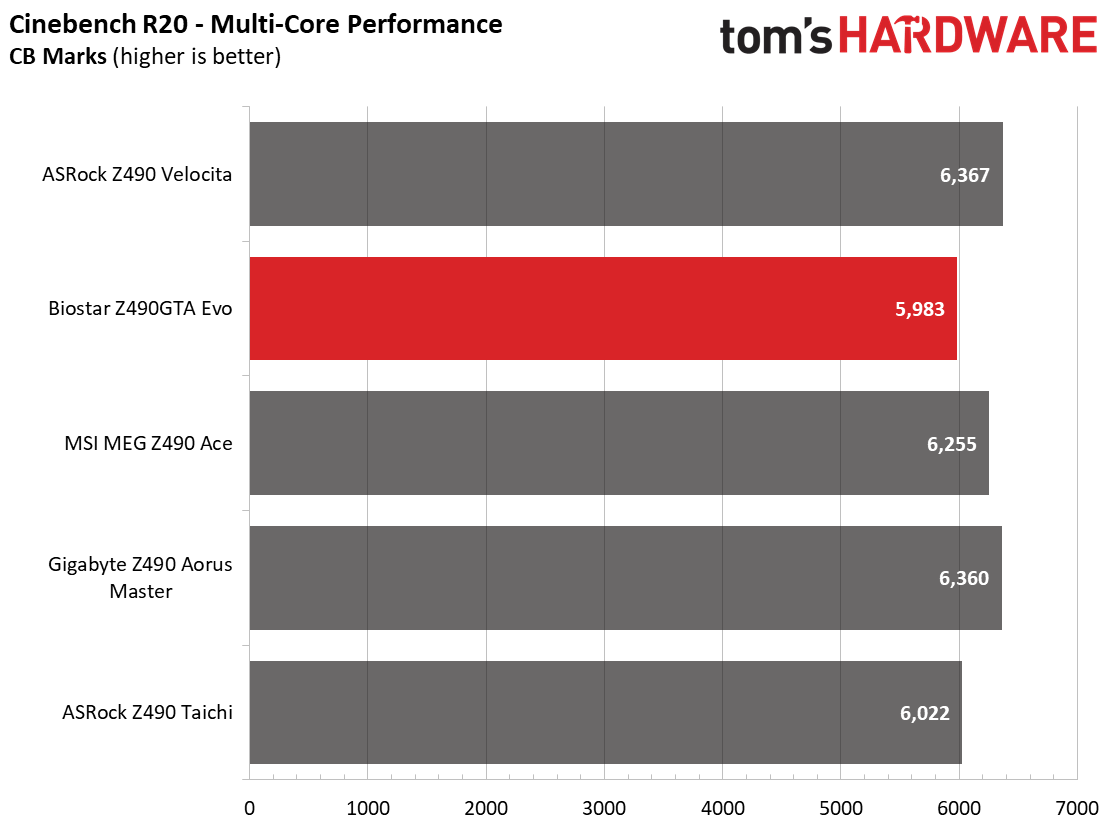
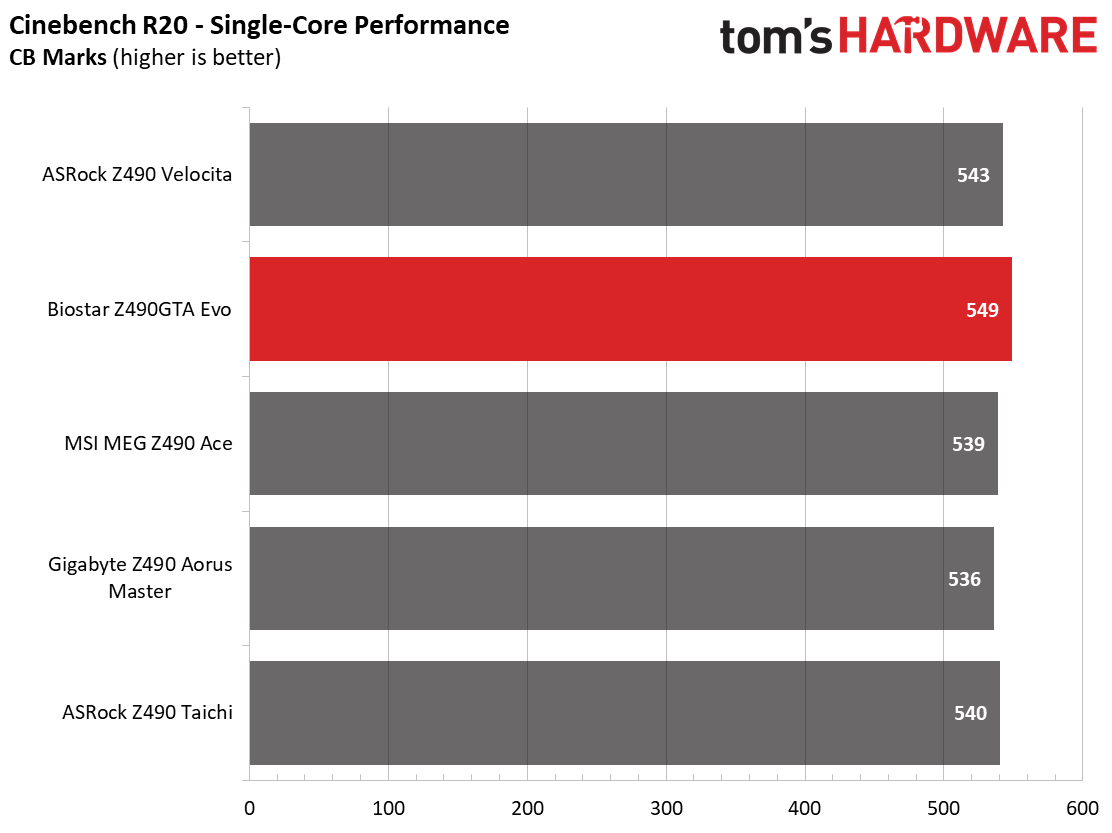
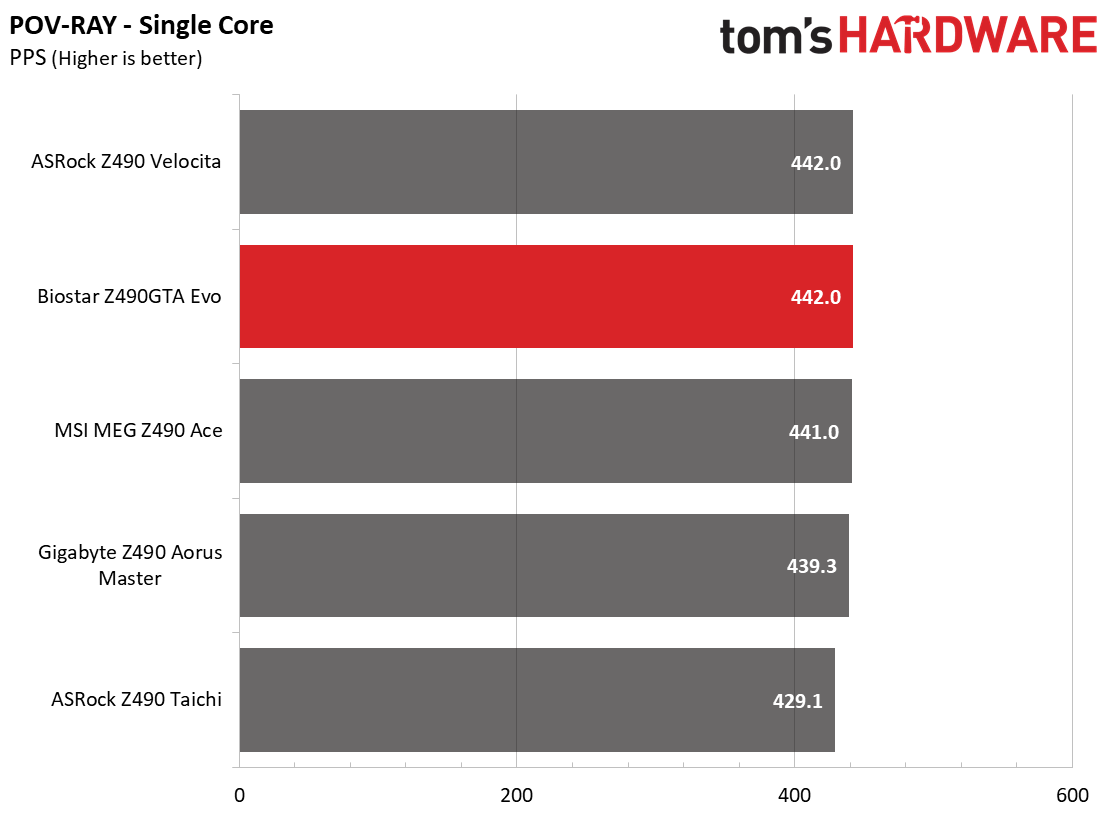
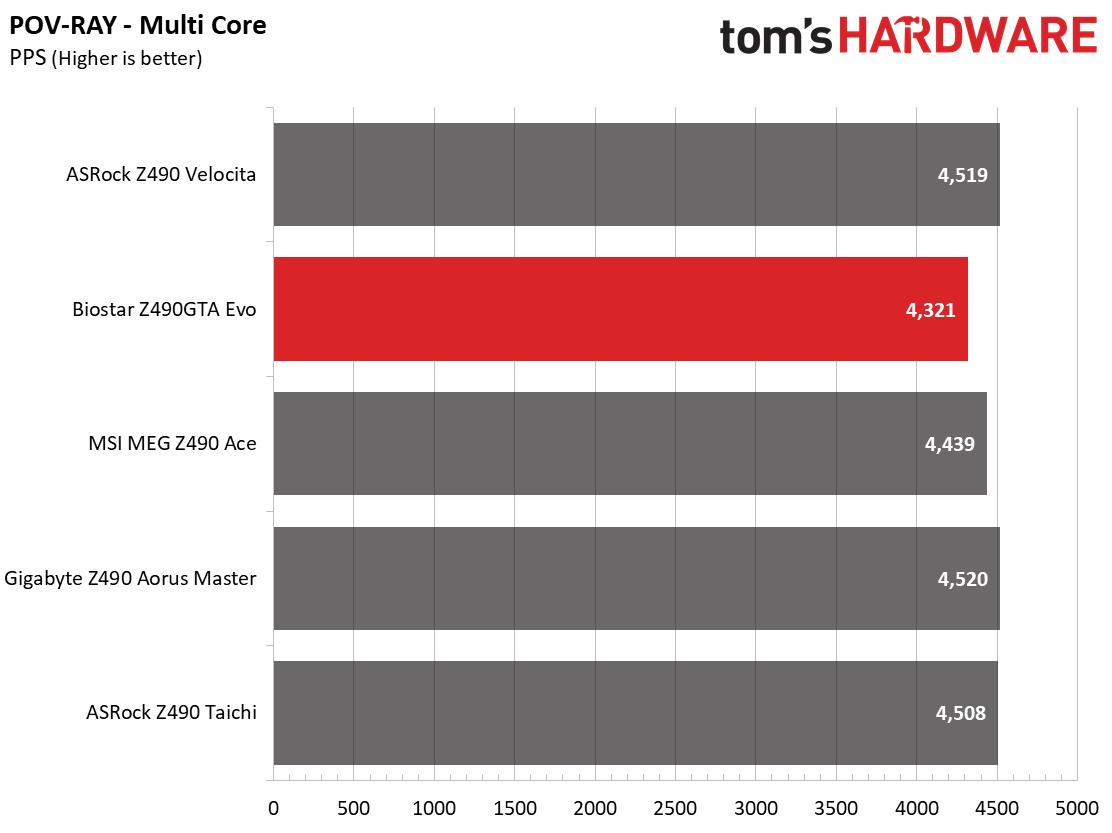
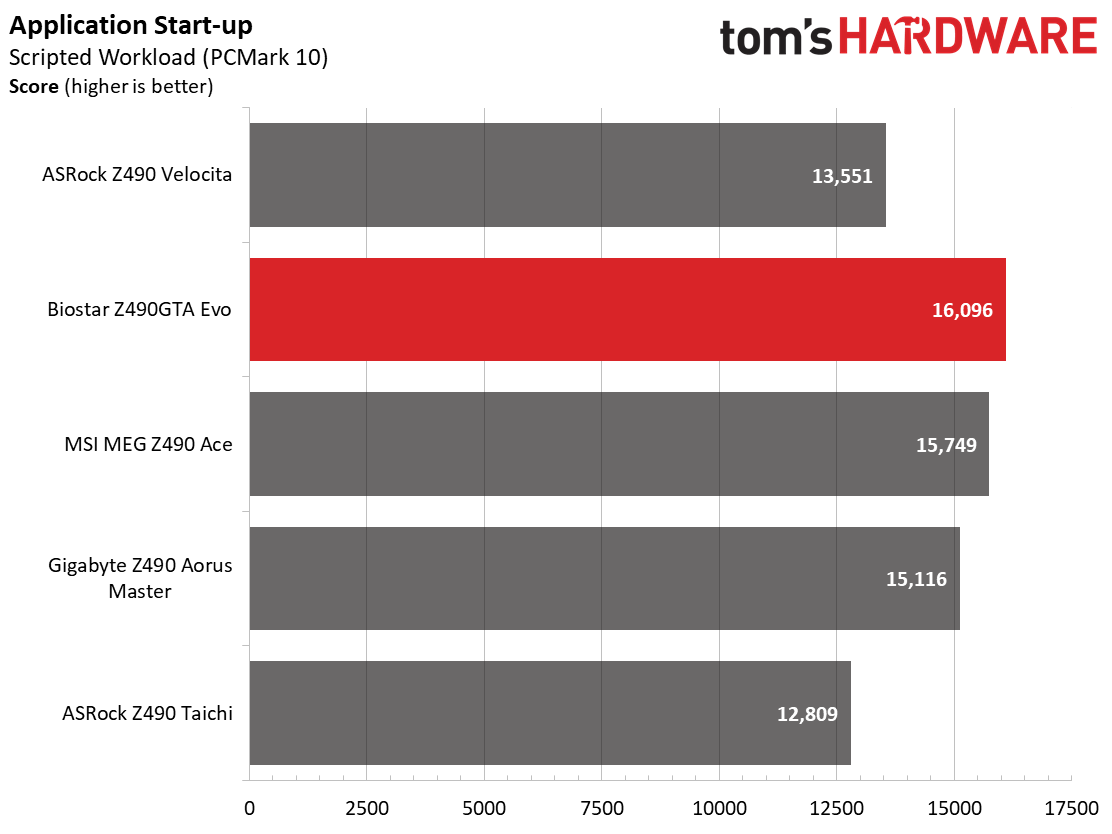

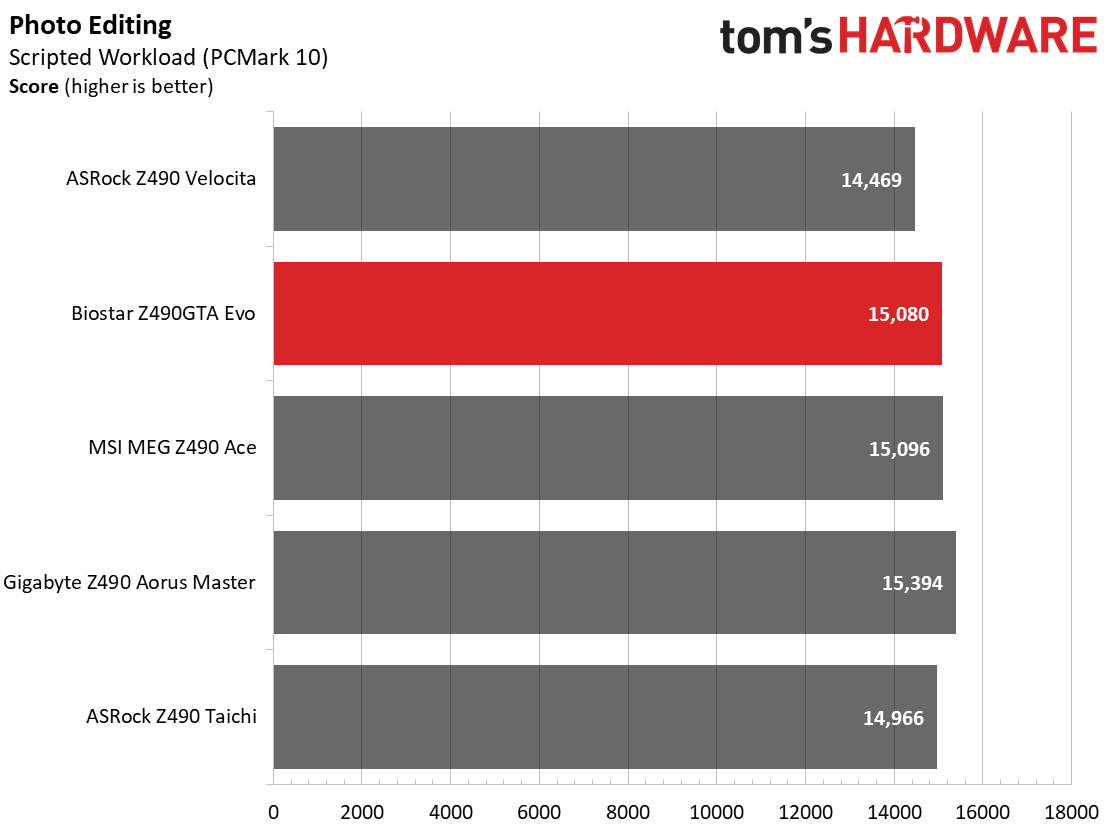
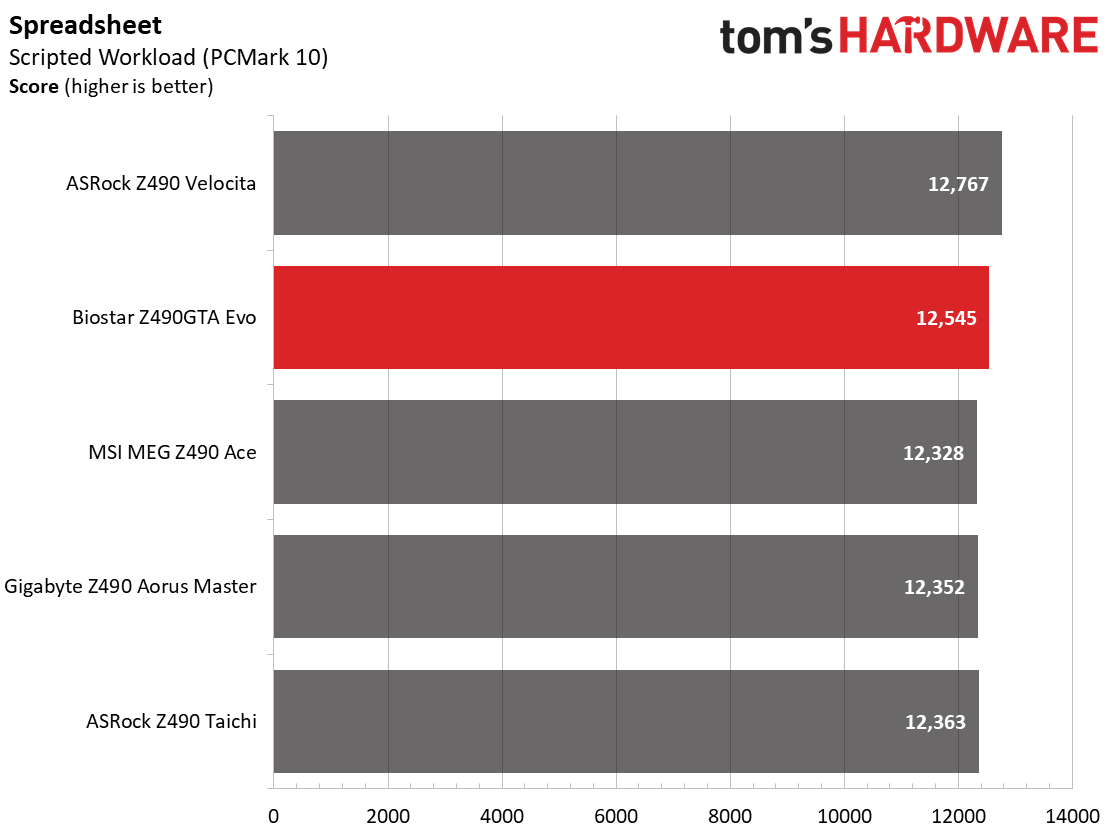
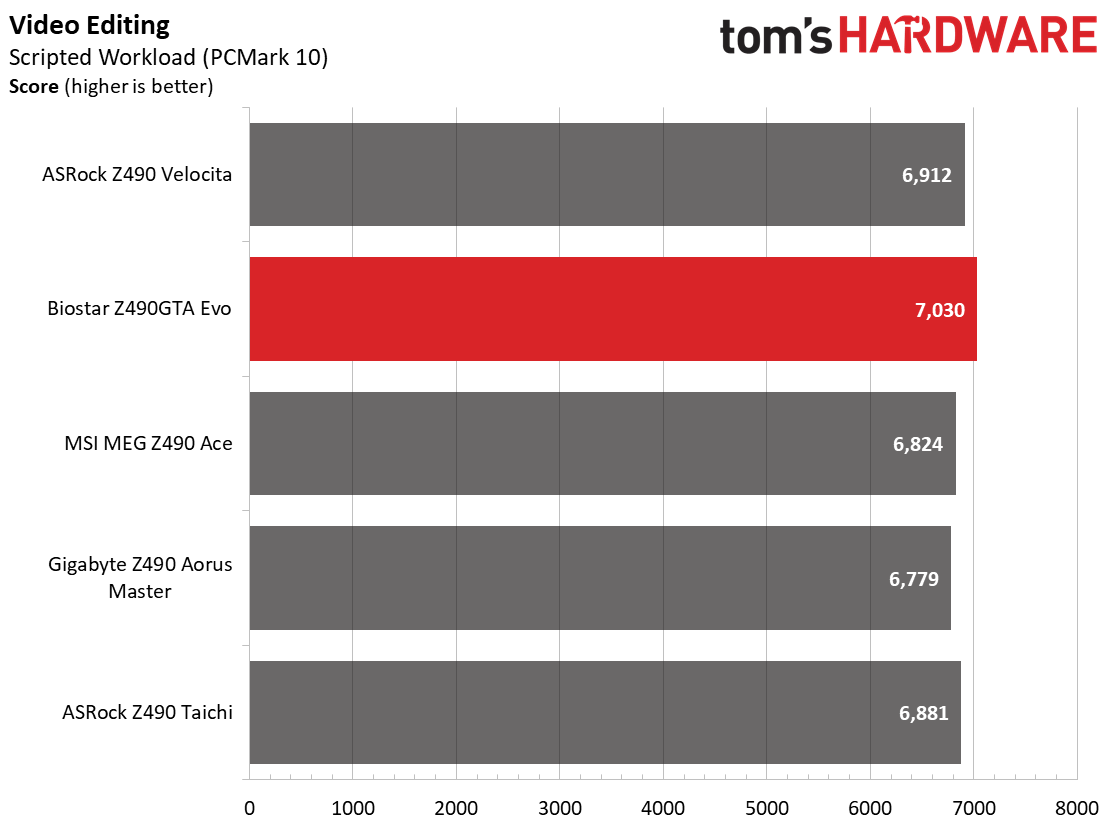
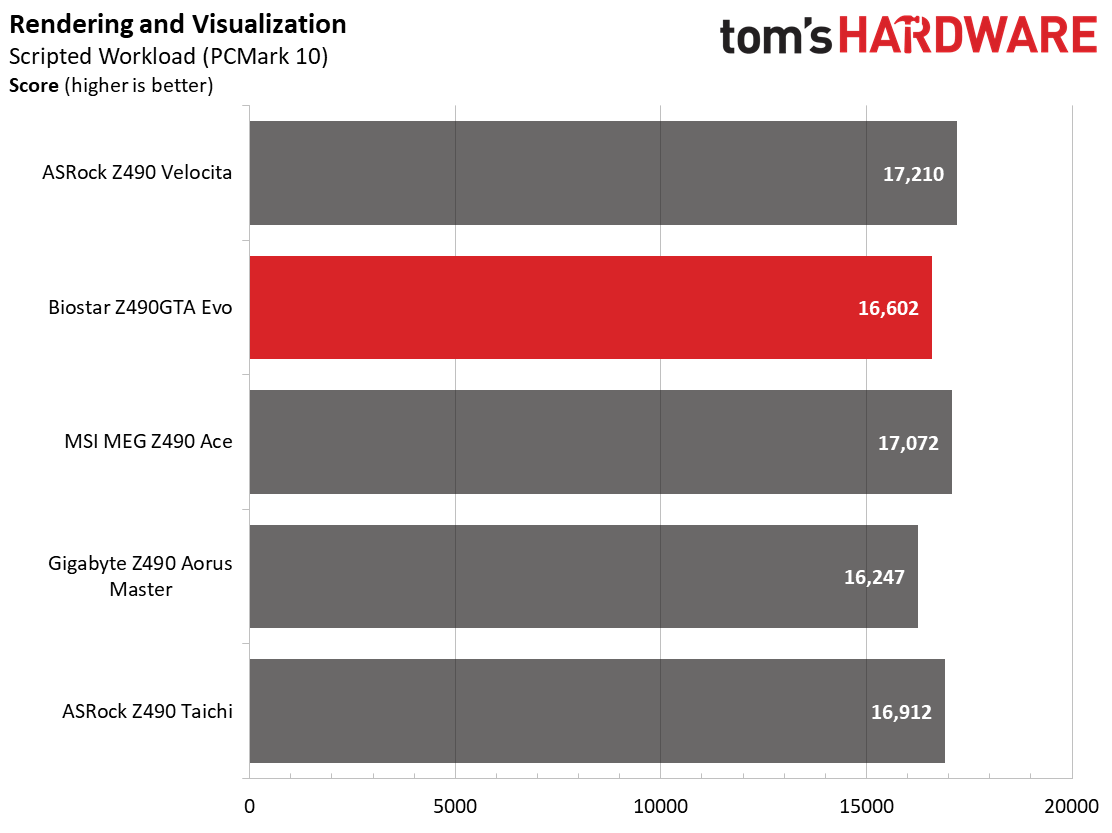


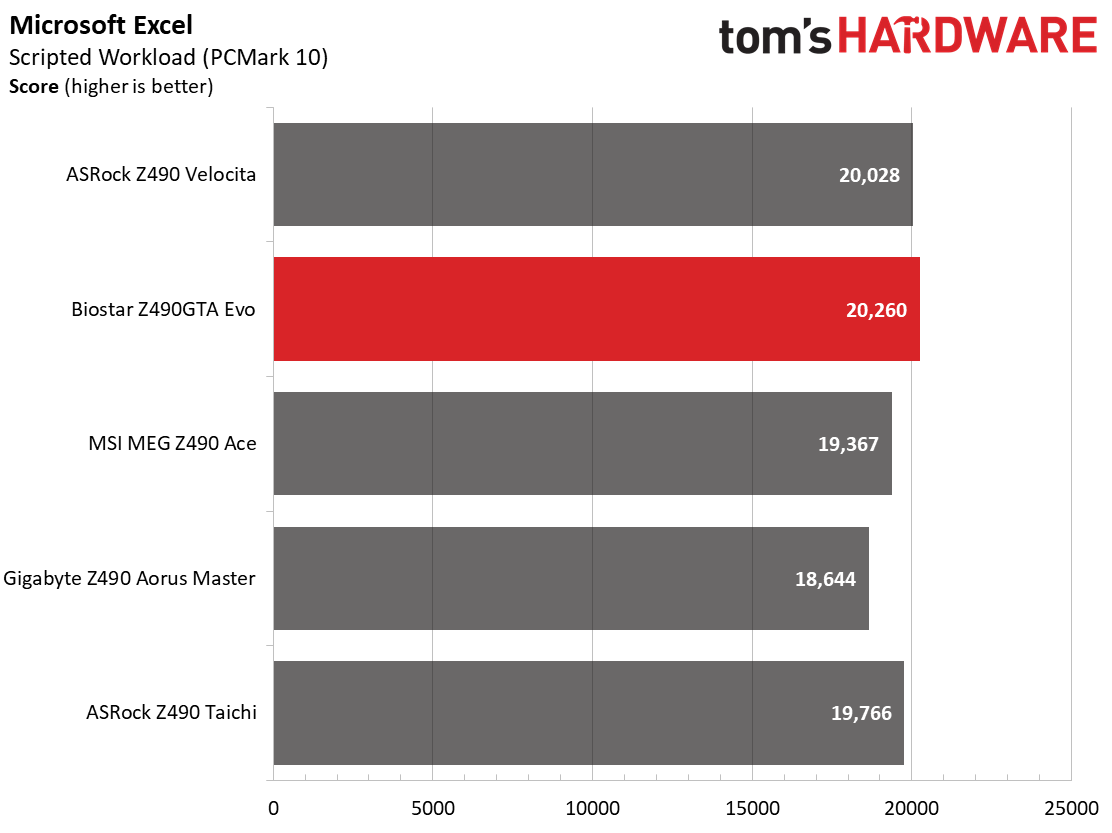
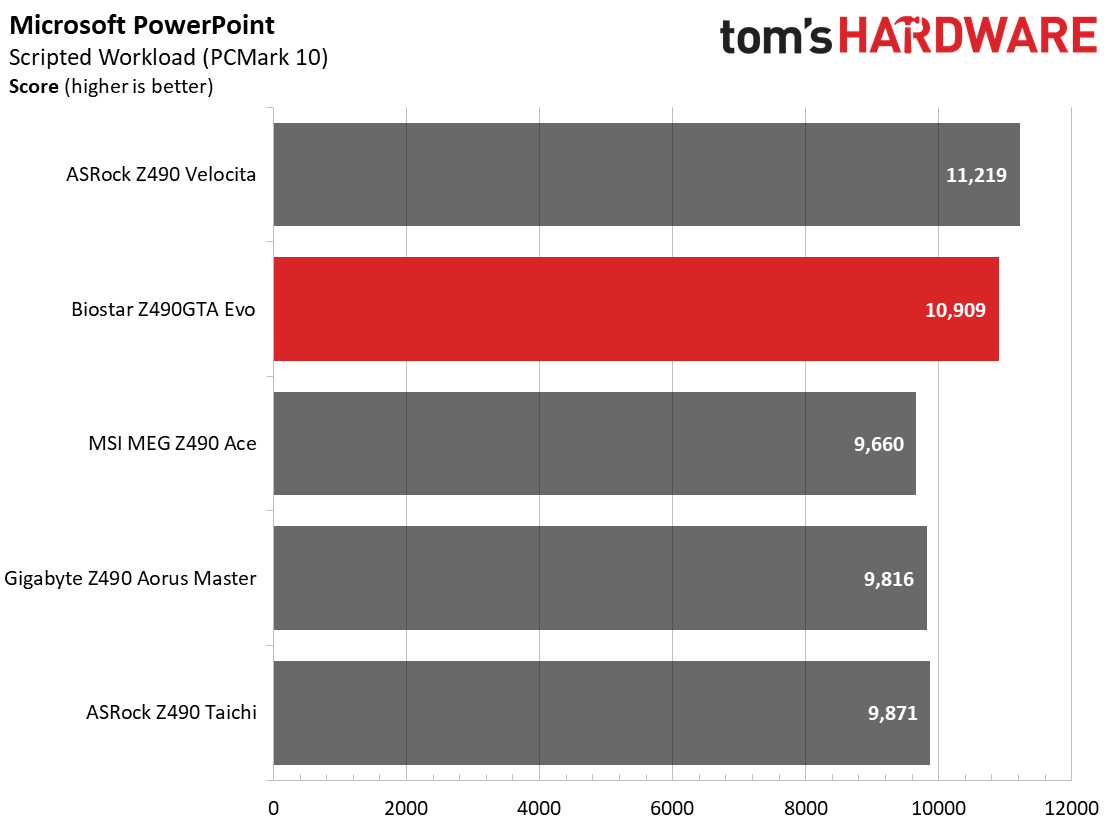
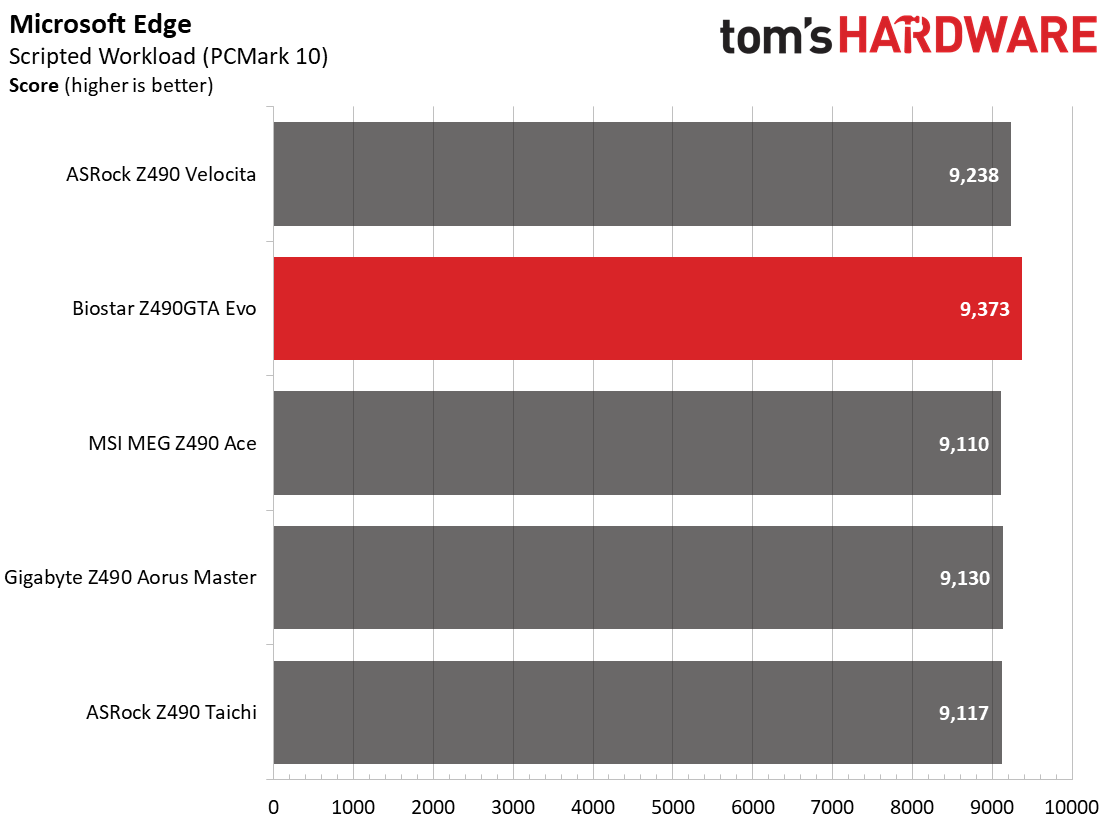
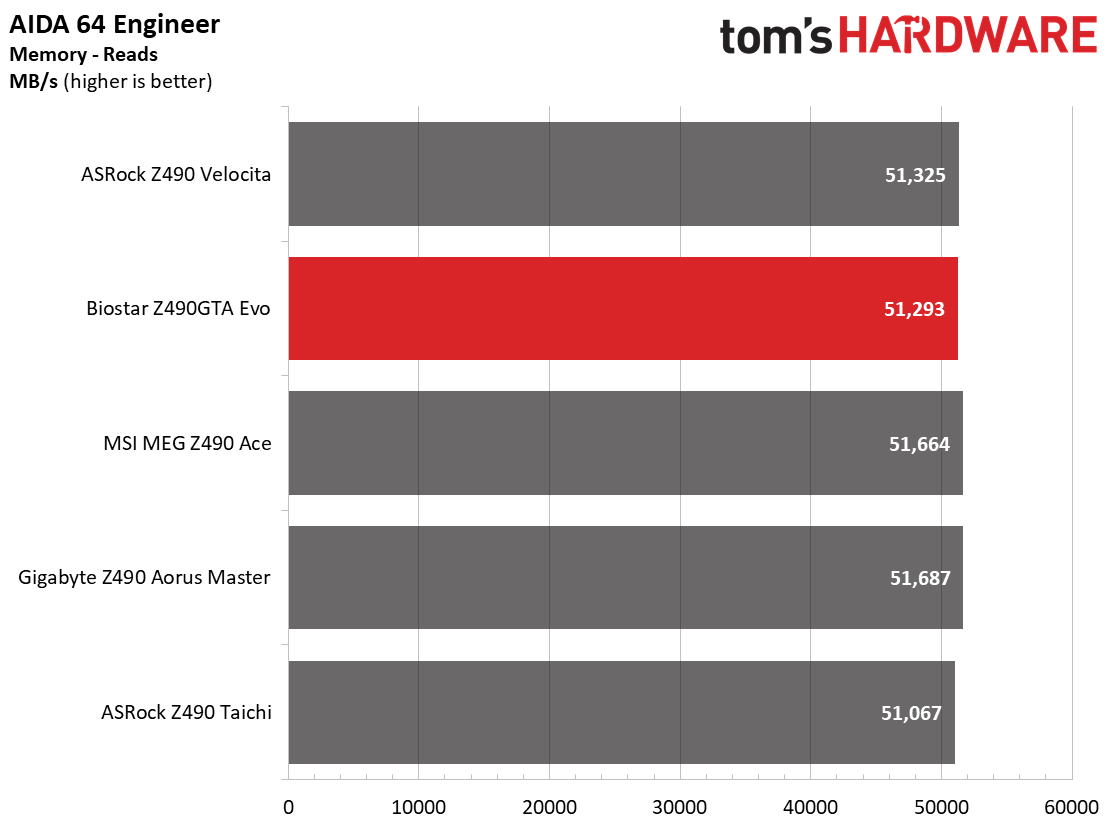

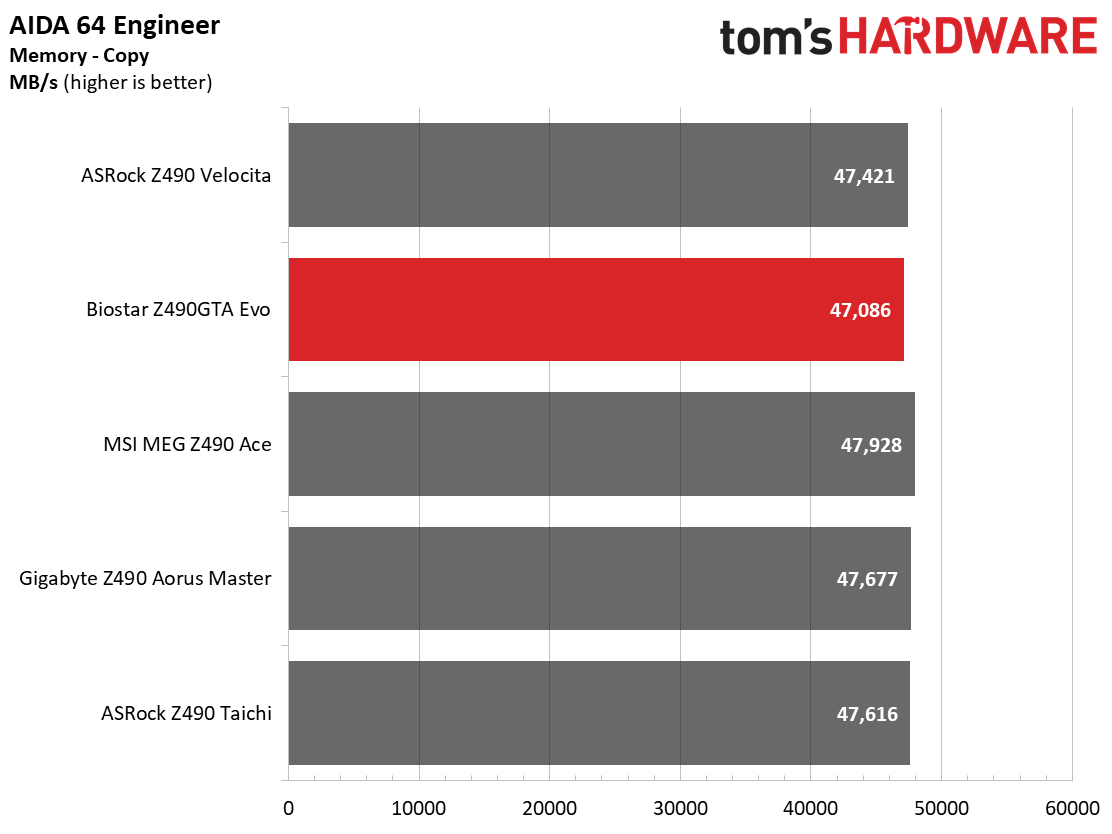

In our synthetic benchmarks, The Biostar Z490GTA EVO was hit or miss depending on the benchmark. For example, it was the slowest overall in 7-Zip, but the fastest in the PCMark 10 suite. According to Intel XTU, our board occasionally triggered a Current/EDP limit which lowered clocks, sometimes blipping down to 800 MHz (this was seen more so when trying to overclock), which is not ideal. Nothing else was out of the ordinary, with memory bandwidth and latency in line with the rest.
Timed Applications
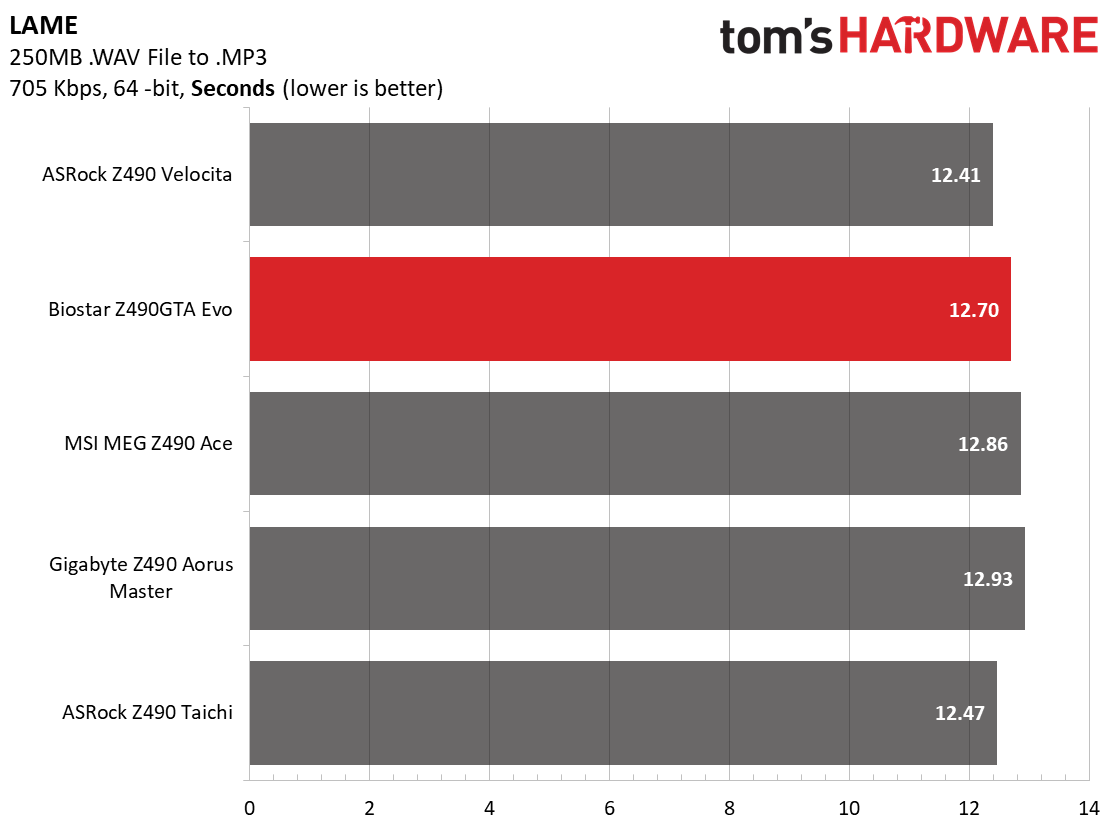

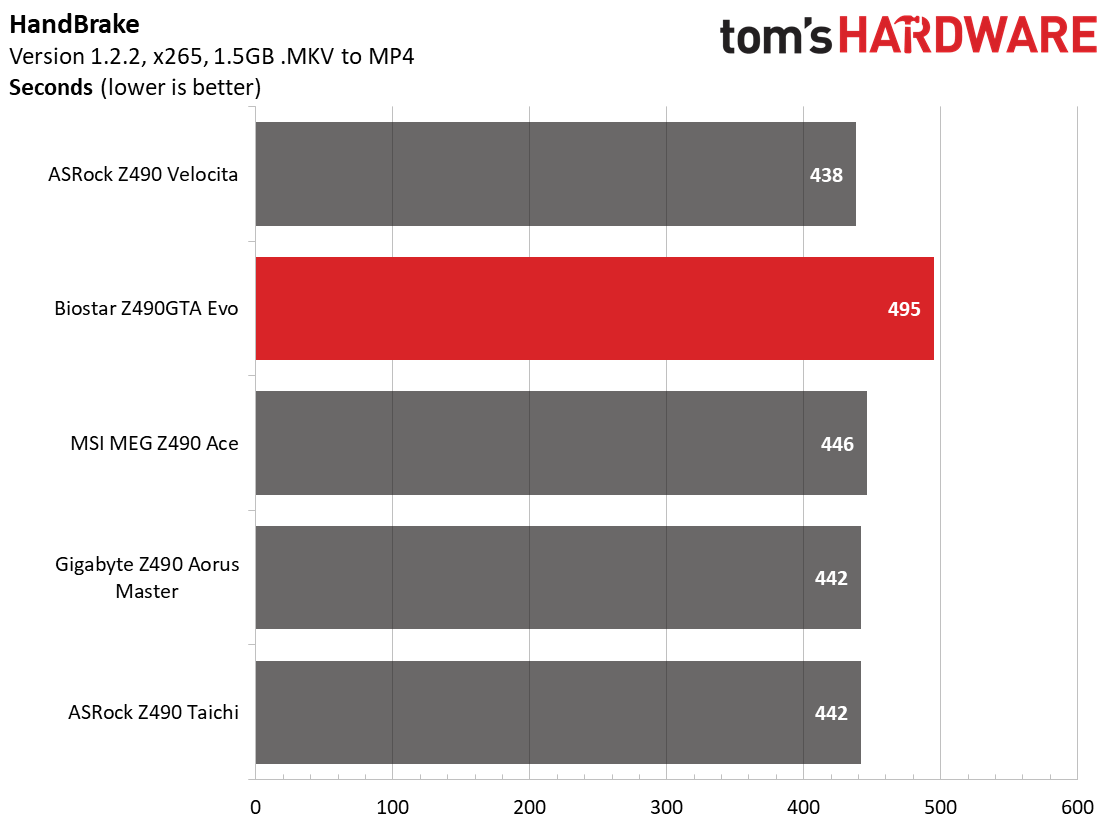
Our timed applications show the Z490GTA EVO was slower in most tests. In both HandBrake tests, this board was 11% slower, again seeing the result of more strict adherence to the Intel limits.
3D Games and 3DMark

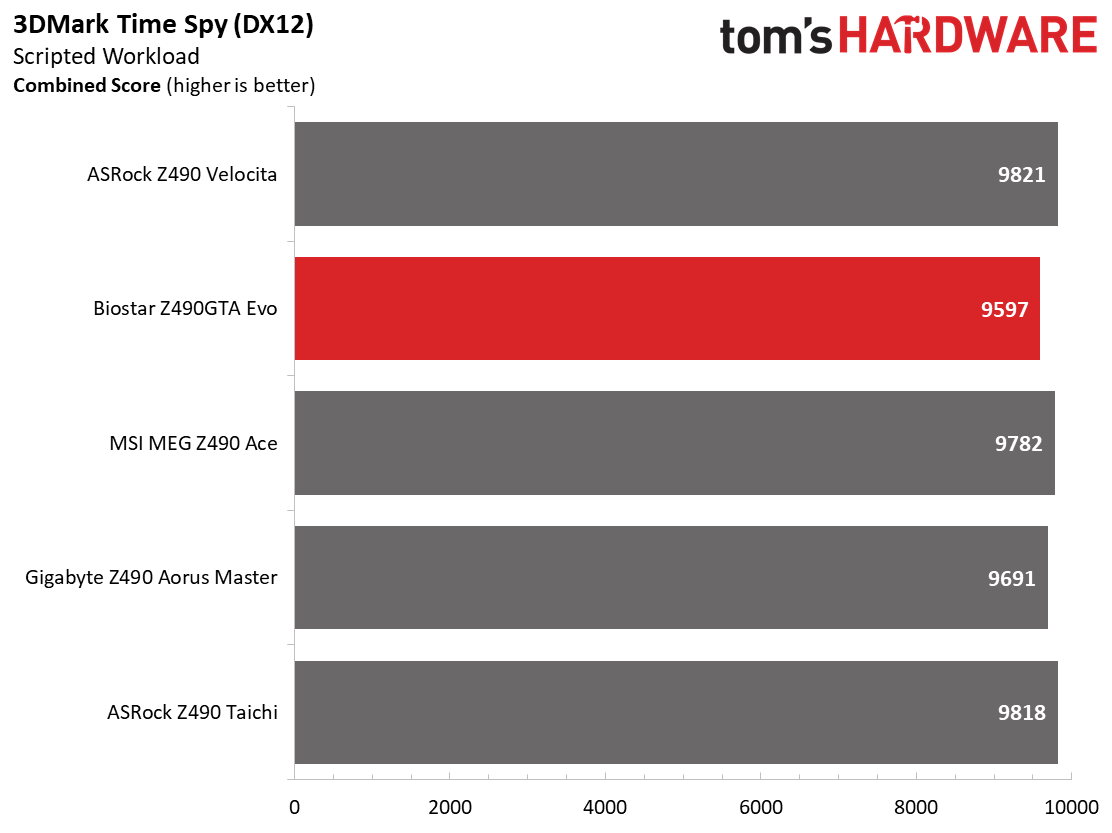
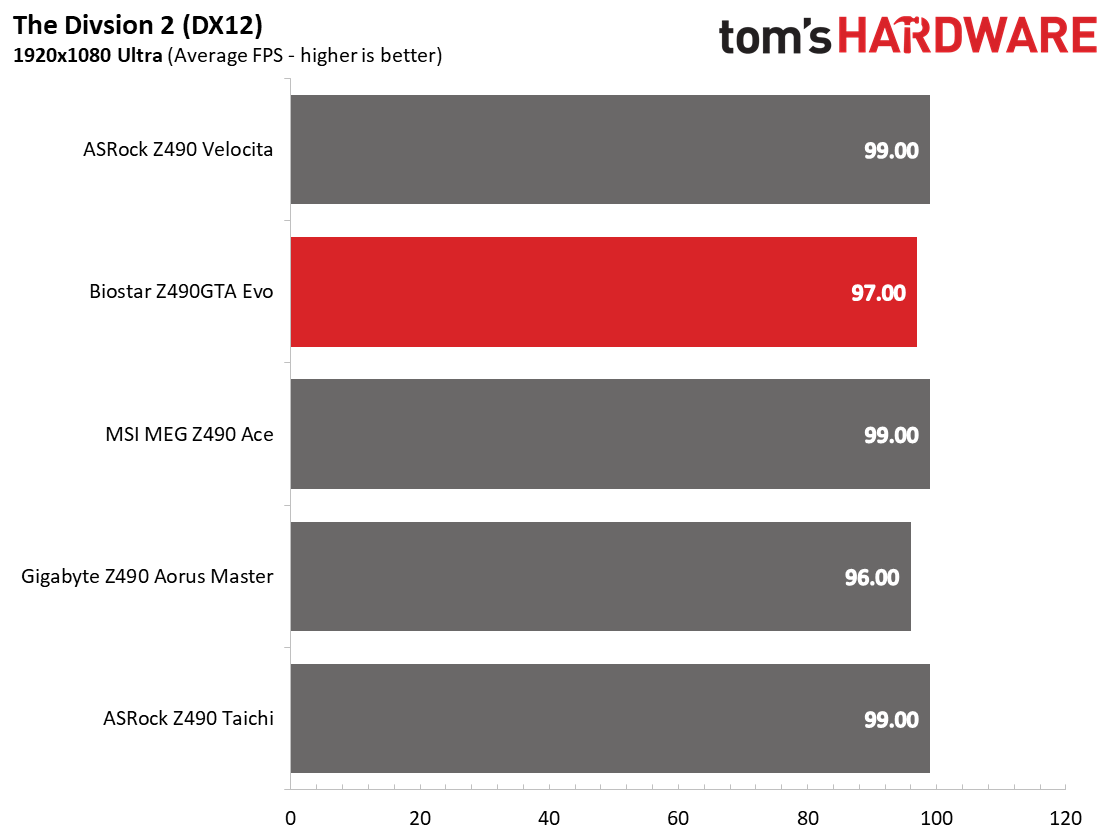
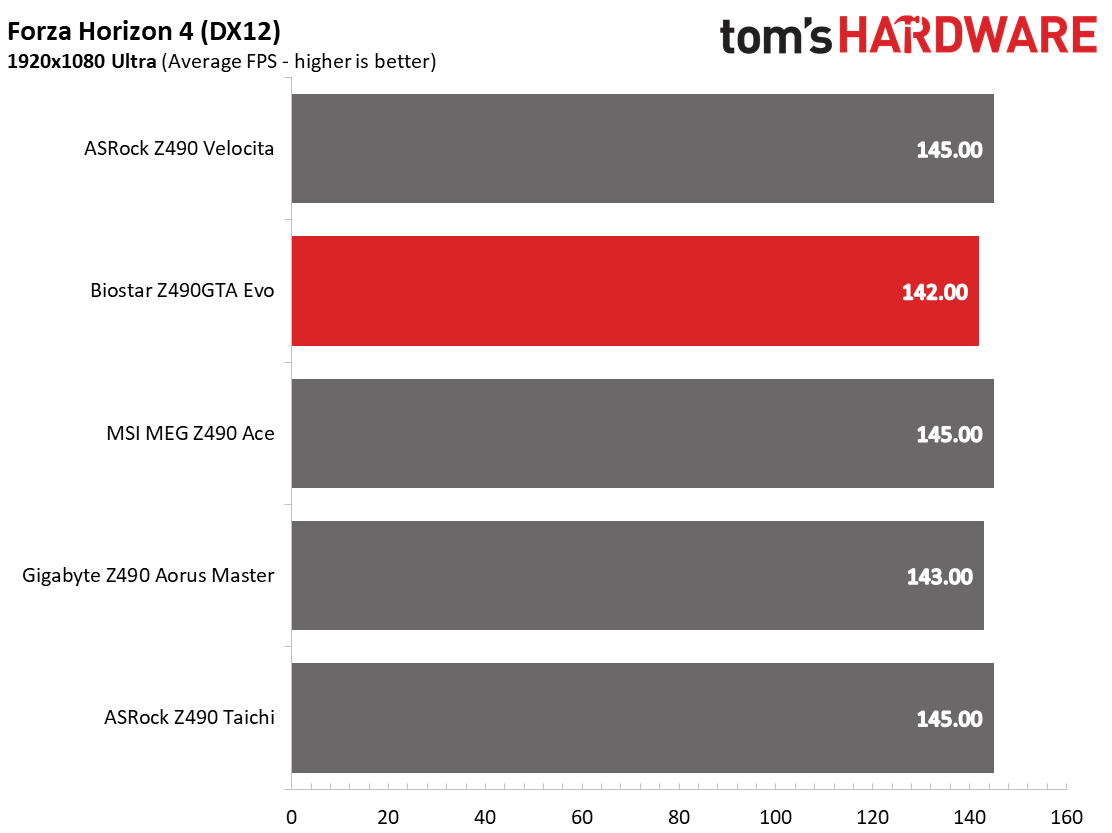
We’ve recently updated our game tests to more The Division 2 and Forza Horizon 4. The games are run at 1920x1080 resolution using the Ultra preset. As the resolution goes up, the CPU tends to have less of an impact on most games. The goal with these settings is to determine if there are differences in performance at the most commonly used resolution with settings most people use or at least strive for.
In both 3DMark tests and the games, the Z490GTA EVO performed just as well as the other boards, within a general margin of error. Nothing out of the ordinary here!
Power Consumption / VRM Temperatures
The first glimpse of power use for this platform and the Core i9-10900K may be a bit shocking to some, with loads reaching almost 200W at stock speeds (because most boards allow for a higher draw than intel spec), many users will be hard-pressed to keep these cool and get the most out of the chip. For power testing, we used AIDA64’s System Stability Test with Stress CPU, FPU and Cache enabled using peak power consumption value. The wattage reading is taken from the wall via a Kill-A-Watt meter to capture the entire ecosystem. The only variable that changes in these reviews is the motherboard; all other parts are the same.
Get Tom's Hardware's best news and in-depth reviews, straight to your inbox.
The Biostar Z490GTA EVO test system idled at 48W (the lowest so far) while peaking at 311W under load (actual load wattage for the CPU peaked at 238W, according to HWInfo64). Once the Intel parameters kicked in, temperatures dropped and so did power, down to 124W (TDP).
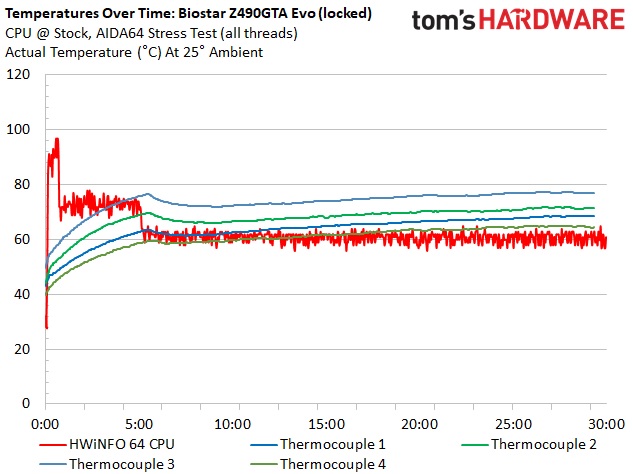
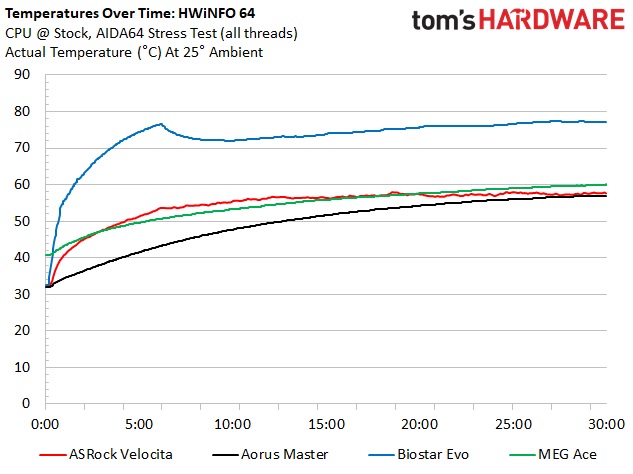
VRM temperatures when running stock speeds were the highest we’ve seen among the five boards tested so far. According to our thermocouples (we couldn’t definitively find the VRM temperatures in HWInfo), temperatures reached almost 80 degrees Celsius during the test period. The 40A power bits seem to be working hard to deliver power to the CPU in stock form and we were not able to gather overclocked readings due to current limits getting in the way.
Overclocking
From our other Z490 motherboard reviews, we know the CPU sample lets us run up to 5.2 GHz at ~1.35V while keeping the CPU somewhere around 90 degrees Celsius. But, with the current state of this motherboard, we weren’t able to overclock without running into current limits that throttled the CPU and seemingly shut the board down. We even tried 1.3V and 5 GHz, which still ended up throttling during stress testing. Any time the CPU reached 230W in Intel XTU, the application displayed Current/EDP throttling, causing the clock speeds to vary.
Biostar responded to the stress-testing/overclocking/throttling concerns stating the “maximum full-core overclock speed of the i9-10900K in Z490GTA Evo is 5 GHz”. In other words, overclocking doesn’t seem possible without throttling on this motherboard. That’s not a good thing for Z490, the only current Intel chipset that can overclock in the first place.
Memory testing didn’t exactly go well either. Although the DDR4 3600 sticks worked without issue, we were not able to get our GSkill DDR4 4000 sticks stable on this board. We tried XMP settings and manually adjusting voltage -- up to 1.3V on both VCCSA and VCCIO and 1.4V to the DRAM itself -- to no avail. Failing miserably, we reached out to Biostar for help. They claim to have achieved settings of 1.2V VCCSA and 1.3V VCCIO running DDR 4000 along with slightly increased DRAM voltage, but this did not work for us. The good news is that we know those speeds are possible, but not with our RAM kit at this time.
Final Thoughts
Biostar’s Z490GTA EVO is priced at $239.99 which places it squarely in the mid-range segment of Z490 motherboards. We compared it directly to the ASRock Z490 PG Velocita ($259.99) and it competes with similarly priced boards like the Asus ROG Strix Z490-A Gaming ($249.99), Gigabyte Aorus Pro AX ($269.99) and MSI MPG Z490 Gaming Carbon WIFI ($269.99).
For the most part, the difference between them outside of aesthetics and pricing is that these other boards all include 2.5 GbE LAN as well as more-capable power delivery. Some, like the MSI board, even include USB 3.2 Gen2 (20 Gbps) ports. Most of those boards cost a bit more, but they also include more and faster connectivity and better features.
Compared to Z390 based Biostar boards, we did see an improvement in looks as well as better power delivery to support 10th generation Intel CPUs. The 40A MOSFETs ran the hottest during testing by quite a bit, though they are working within specification. Biostar’s choice to group together like items such as the RGB headers and fan headers (2 locations) should help with wire management. But comparing it directly to the ASRock Z490 PG Velocita we reviewed at just $10 more, the ASRock board has more two SATA ports and one more M.2 slot, better power delivery, a faster LAN port and is able to overclock our flagship CPU.
In the end, the Biostar Z490GTA EVO board is good for stock operation for an i9-10900K but nothing more. For as little as $10 more, there are better options. A BIOS update enabling users to raise the current limit would be a big improvement, but the price still seems a bit high for the features on offer with this board.
MORE: Best Motherboards
MORE: How To Choose A Motherboard
MORE: All Motherboard Content

Joe Shields is a staff writer at Tom’s Hardware. He reviews motherboards and PC components.
-
Co BIY Would this board have the pull to get the most out of an i7k or i5k?Reply
These are arguably much more relevant chips for the mid range market and gamers in general.
